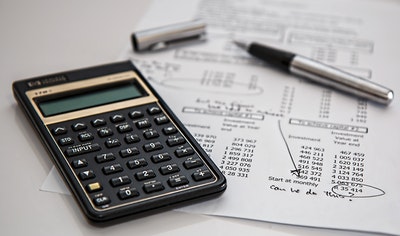Mastering the Art of Day Trading: 3 Steps to Enhance Your Earnings

Like mastering the guitar or driving a car with perfect precision, the only way to master the art of trading is through practice.
But practicing alone won’t cut. It’s only the first step in the long list of steps – practicing, reviewing, and adapting that will dramatically improve your chances of success in day trading.
So, How to Improve Your Day Trading Skills?
Once you find how to place an order, start calculating the ideal position, size, and factors that will help you manage risk. On that basis, you could develop an essential strategy to follow. Use this simple strategy with all your trades, which will help you gain valuable experience.
Then, it would help if you took the time to re-evaluate your previous trades on a daily, weekly, or monthly basis. Reviewing your previous trades will find factual information on what works and what doesn’t in your strategies.
If the loss ratio is more than your profits, educate yourself about the market and learn to trade with the assistance of an online trading program. With proper guidance, you will soon find that your profits are increasing and your losses are decreasing.
Consequently, you will adapt to your trading plan based on the newly found education and information. Moreover, depending on the market’s current situation, you can now develop more profitable and least risky strategies.
Below you will find the steps you need to take to make your day trading impenetrable:
Step #1: Practice Day Trading
Reading articles and watching videos on current market trends is not enough.
If you want to become a successful day trader, you need to continuously practice your learning before ingraining them in your profitable trading decisions.
To make your practice more productive, focus on a particular element or activity in the market. This is where you will find a trading plan for success.
A trading plan is a strategy that precisely summarizes how, why, and when a trader should enter and exit trades.
Why Should You Make a Trading Plan?
Practice requires you to follow a plan to track your progress. If you make trades based on psychological whims and random factors, your trading results will also be unpredictable and random.
Try practicing with one component of a trading plan at a given moment until the strategy becomes more profitable and less treacherous. For instance, you may try going through charts to pick an appropriate entry point for your trades.
Because when it comes to day trading, you’ll need quick reflexes and razor-sharp timing. Practice so that you enter a deal exactly when you need to, based on your plan.
Next is to place the stop-loss at the correct value. Then practice setting the profit target accurately. Remember that perfecting stop-loss value and profit target can take months to master.
Once you get skilled at placing your entry points, stop-loss levels, and profit targets according to your trading strategy, begin adding other elements of the plan.
While this may sound a bit unconventional, all this time, a trader was also practicing what not to do.
Your objective is not to follow your strategy blindly and enter all the deals it tells you to take part in (when conditions seem favorable), but you are practicing to stay away from the market when your plan isn’t telling you to enter a trade.
Step #2: Make Investigation in Your Day Trades
When you are following and practicing a specific strategy, you are consciously heading towards becoming a profitable day trader.
The process of reviewing your day trades is where you find reasons to critique the strategy (what changes you need to make in your current plan) and your capability to follow the strategy (what you must work on).
Self-analysis should be done daily, whereas reviewing a trading plan should take place weekly or monthly.
Self-review is skimming through all your trades on a given day and evaluating how well you followed your strategies. If you find deals that are not a part of your previously formulated strategy, that’s a big problem.
If you look at the charts for the day and find deals you were supposed to participate in but didn’t, that’s also a problem. Look for a deal where you have veered off from your exit plan – adhering to the loss for too long or booking the loss or profit too early.
In the future, make sure you pay special attention to these problems.
Step #3: Adapt to Your Trading Plan
After continuous effort and an entire month of trading, you are allowed to make relevant changes to your trading strategy based on what you have learned from previous trading sessions.
According to these new changes, Trades should be practiced for another month and reviewed for any discrepancies.
Try not to make any significant changes to your trading plan before one month because it’s easy to make changes based on an individual deal (where a lot can happen) instead of comprehensive results (the valid indicators of accurate performance).
The issues you find in your self-review work daily. With self-analysis, your only goal is to formulate and follow a strategy. However, it may seem on the surface. As your trading plan transforms and becomes better than its previous version, your goal should always follow the plan.
Keep it Under Control.
Focus on making the changes in your monthly trading plan small and manageable. It allows you to practice the changes effectively and observe how they affect your daily trading.
On the other hand, if you make significant changes to your trading strategy, it will be challenging to find which changes are working and which ones are redundant.
The same notion applies to your everyday self-review. Make sure you work on a single problem at a given time. When trying to find solutions for several issues at once, you are not giving enough time to each situation.
As a result, the whole effort becomes useless, and you make more mistakes than before.
To Sum it Up
To master the art of trading, one must learn and practice the ways of the market.
With sufficient funds, continuous effort, and risk management, anyone can become a successful trader.
However, make sure you first give yourself the benefit of education and practice in the challenging stock or forex market.




![5 Investments That Aren’t Stocks [And Why You Should Consider Them]](https://stumbleforward.com/wp-content/uploads/2018/05/euro-penny.png)
